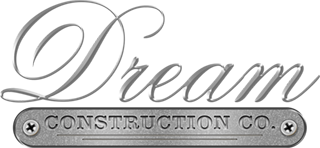
Contemporary and modern homes are popular choices among Las Vegas homeowners considering design and style for their new home construction. While the two terms are often used interchangeably, there are distinct differences and unique characteristics that distinguish one from the other.
Key Differences Between Contemporary vs. Modern Home Styles
Modern homes, rooted in the Modernism movement, embody strict design principles characterized by minimalism, functionality, and a preference for industrial materials like steel, glass, and concrete.
These homes are known for their clean lines, symmetrical design, and monochromatic color palette, emphasizing whites, blacks, and grays. The focus is on creating sleek, open spaces with abundant natural light, adhering to a minimalist aesthetic that prioritizes simplicity and uncluttered spaces.
On the other hand, contemporary design is fluid, reflecting what is being created and produced now. This includes an eclectic mix of design elements drawn from different periods and styles. Notable features of contemporary homes are sustainable and natural materials, energy efficiency, natural light, and a mixture of textures and materials.
Structural & Architectural Differences
The structural and architectural differences between modern and contemporary homes aren’t just aesthetic. They’re also foundational, reflecting distinct philosophies and technological advancements.
Modern Architecture & Structure
In modern-style homes, you’ll find a post-and-beam structure, which allows for large windows and open floor plans. This structure is common in the Midcentury modern architectural style, which emphasizes horizontal and vertical lines.
- Flat or low-pitched rooflines, complementing the clean, horizontal emphasis of the structure. Large, often floor-to-ceiling windows are a signature element, designed to bring in natural light and blur the lines between indoors and outdoors.
- The interior layout in modern homes typically includes open floor plans. This design concept, devoid of unnecessary walls and partitions, creates spacious, airy, and light-filled living areas.
- The interiors of modern homes are minimalist, with an emphasis on simplicity and functionality. This is reflected in the limited use of accessories and a focus on streamlined furniture and fixtures.
Contemporary Architecture & Structure
A contemporary home, conversely, tends to be more flexible in structural design, blending current, past, and future design trends. This could translate into irregular, curvy, and asymmetrical shapes, liberal use of glass for a seamless indoor-outdoor transition, and green technologies such as solar panels or green roofs.
- Contemporary homes may use a variety of structural techniques, often reflecting the latest advancements in building technology and materials. This includes eco-friendly building materials and practices, emphasizing sustainability.
- Varied and dynamic rooflines are more common in contemporary homes, often featuring irregular shapes and innovative designs. Windows in contemporary structures aren’t just functional but also artistic, with unique shapes and placements.
- Unlike the strict open plans of modern homes, contemporary homes offer more flexibility. These homes can include a mix of open spaces and more defined, separate areas, adapting to the needs of the occupants.
- Contemporary interior design is eclectic, reflecting current trends and personal tastes. There’s a broader palette of materials, colors, and textures, allowing for more personalized and expressive interior spaces.
Similarities Between Contemporary & Modern Homes
Despite their differences, contemporary and modern homes share several key characteristics that underline their popular appeal.
Elegant & Clean Simplicity
Both styles place a strong emphasis on simplicity and clean lines, which is evident in their architectural designs. This simplicity is not just a visual aesthetic but also a philosophical approach to living spaces, eschewing unnecessary ornamentation for a more straightforward, functional form.
Wide Open Spaces
Additionally, both contemporary and modern homes prioritize the use of open spaces. These open floor plans enhance the feeling of spaciousness and create a seamless flow between different areas of the house.
Plentiful Natural Light
Natural light is another crucial element in both styles, with large windows and strategically placed skylights being common features. This not only illuminates the interiors but also helps in energy conservation and creates a more welcoming atmosphere.
Blending The Indoors & The Outdoors
Lastly, there is a significant emphasis on indoor-outdoor living in both contemporary and modern homes. This is achieved through elements like large glass doors that open to outdoor living spaces, blending the interior with the exterior and emphasizing a connection with nature.
Making Your Choice: Contemporary vs. Modern
The decision between talking with your home designer about building a modern home or a contemporary one largely depends on personal style and lifestyle. Those who appreciate a streamlined, simple aesthetic and modern furniture may lean towards the minimalistic charm of a modern home.
In contrast, those seeking more diversity in interior design styles and embracing current trends could find the variable and adaptive nature of contemporary homes more attractive.
Create Your Ideal Home With Dream Construction
When it comes to building a new home, it’s important to work with a skilled team that can bring your vision to life. Specializing in new home construction, Dream Construction is committed to delivering exceptional results for clients considering both contemporary and modern designs in the Las Vegas, NV, area. Contact us to take the next step toward creating your dream home.
